INTERESTING FACTS ABOUT AUSTRALIAN SNAKES
There are lot’s of interesting facts about Australian snakes. Some you’ll know and some will definitely surprise you. So let’s begin:
Let’s being with 10 snake facts
- Snakes are a reptile – they have bee around for approximateily 100 million years and evolved from prehistoric lizards.
- They are found on every continent in the world except Antarctica.
- There are no snakes native to New Zealand.
- Did you know snakes have no external ears. They are mostly deaf to airborne sounds. They do have an inner ear (like humans), which helps with balance. You can shout/scream as loud while walking in the bush but it simply wont scare a snake away.
- They can visualise their surroundings using their tongue to pick up chemicals in the air.
- No eye liner for snakes, They don’t have eyelids.
- Snakes do not have good eyesight. They respond to movement, which scares them.
- Most snake species do not see in colour. If you stand completely still in-front of a snake it cant tell the difference between you and a tree or a rock.
- Before shedding, a snake’s eyes will become cloudy/opaque.
- When a snakes strike, they have a near 100% success rate.
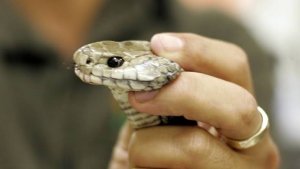
Here are another 10 snake facts
- There are several families of snake throughout Australia.
- The most deadly snakes found in Australia include Brown Snakes, Copperheads, Death Adders, Red-Bellied Black Snakes, Taipan Snakes and Tiger Snakes.
- 70% of all snakes hatch from eggs.
- Mother pythons will coil themselves around their eggs using their bodies to regulate the eggs temperature during incubation.
- Some snakes lay eggs, while others give birth to live young. Always stay clear of a snake with their clutch of eggs.
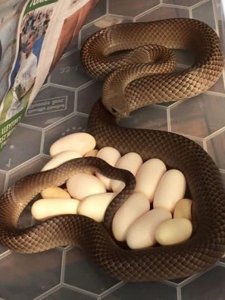
- Endemic to Western Australia’s Pilbara region, the Anthill python (Antaresia perthensis) is the smallest python species in the world.
- Australia is known for its dangerous snakes. However, we only have around 170 on land and 32 sea snakes, with about 100 of those being venomous. The yellow bellied sea snake (Pelamis platurus) is the most widely distributed snake in the world, found in tropical oceanic waters across the globe excluding the Atlantic.
- Most snakes are immune to their own venom.
- The king cobra is the longest venomous snake in the world, and eats other snakes, including other king cobras.
- Snakes can expad the capacity of their jaws due to an elastic jaw ligament.
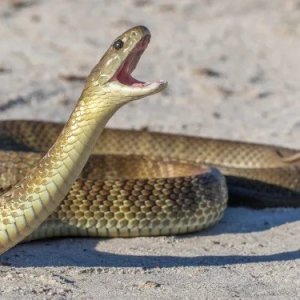
The last 10 snake facts
- The amethystine python (aka the scrub python) is by far the longest snake in Australia, it grows up to 6m. They inhabit the rainforest regions of far north Queensland.
- Snakes are NOT territorial. They do have a home range that they move around in depending on the seasons, but this range can overlap with other snakes and animals.
- Snakes do have bones. Despite being incredibly flexible they are known as a vertebrate (animals with bones). A snakes back bone (or spine) is made up of many vertebrae attached to ribs. Adult humans have 24 ribs, a total of 206 bones. Snakes can have up to 33 ribs, a total of up to 1200 bones.
- Pythons can make an excellent and interesting pet. They require little daily maintenance or cost and can live in captivity for up to 25/30 + years.
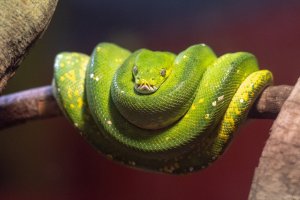
- Snakes have smooth dry skin that is covered in scales. These scales are made of Keratin. That’s the same substance that is in human hair and nails. A snakes scales are sensitive. Each individual scale has the same sensitivity as the end of your fingertip!
- Not having legs, snakes use waves of muscle contractions along their bodies to move. Movement is helped by the belly scales, which catch on any uneven surface. If the ground is very smooth, snakes find it difficult to move in any direction at all.
- There is a story that a bowl of milk will attract snakes. This is a myth. Snakes can’t digest dairy products.
- Another myth is that if you have blue tongue lizards or shinglebacks in your garden, they deter snakes. This is simply not true and in fact a snake will seek out the young of these lizards as food.
- Depending on the species, snakes lay between 10 and 30 eggs. A large python can lay up to 100.
- Here is a full list of fatal snakes bites back to 1867. Click here.
More interesting facts about Australian snakes
We do have some of the top 10 most venomous snakes in the world – the Inland Taipan, Belcher’s sea snake and the Eastern Brown snake just to name a few and we have the most diverse range of repties anywhere in the world, including some of the top 25 “most venomous snakes”. Globally, there are over 3000. Fortunately, very few people die from snake bites in Australia.
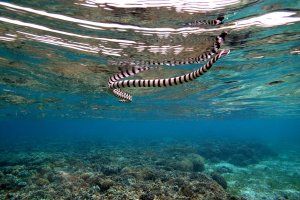
Since the development of anti-venom, deaths are quite rare – between four and six deaths a year. However, in India, for example, bites reach up to one million a year and over 50,000 deaths anually.
Unlike a lion who sees humans as food, snakes don’t want to eat you, they just want to be left alone. Their venom is used to subdue their prey. So seeing a human, they would much rather retreat and get away from you. However, if there is only one escape route and you’re holding a shovel, you can expect they’ll react the only way they can.
Snakes are cold-blooded. They can’t regulate their body temperature internally like mammals do. Snakes need the sun, or at least warm air temperature for their body heat. The colder it is, the more inactive snakes become. That’s why snakes like basking in the sun.
Although snakes have fairly good eyesight, at least over short distances. Their hearing picks up vibrations from the ground, so if you are stomping around, they’ll know you’re coming. This will mean they’ll either slither away or be on the attack. Their most important sense is the sense of smell. You’ll often see the cliched photo of a snake flicking their tongues in and out their mouth. This is how they smell.
Types of Snake Bites
There are two types of snake bites – ‘dry’ or ‘venomous’. Each have different symptoms and it’s important to know that even if you’re bitten by a non-venomous bite, you may still have a reaction that can be life threatening. Treat all bites seriously.
Dry Bites
A dry bite involves a snake strikig its victim but doesn’t inject venom. However, the bite site can still be painful. The percentage of dry bites is uncertain but ranges from 25% – 80% depending on the type of snake (land / sea), the time of year but you should know that all snakes can dry bite. The symptoms from a dry bite can be swelling and redness and the skin may also be punctured. You probably won’t know if its a dry bite, so see medical attention either way.

Venomous Bites
Unlike a dry bite, a venomous snake bite involves a snake strike with venom (poison) being released. The venom in a snake bite has poisons that have the capacity to either numb, stun, or even kill another creature or even a human.
It’s unlikely you’ll be able to identify a snake if it bites you but do not attempt to catch or kill the snake. Seek medical attention immediately.
We hope you found these facts interesting. You can read more on our deadliest snakes at the CSIRO, click here.
To read our post on how to treat a snake bite, click here.

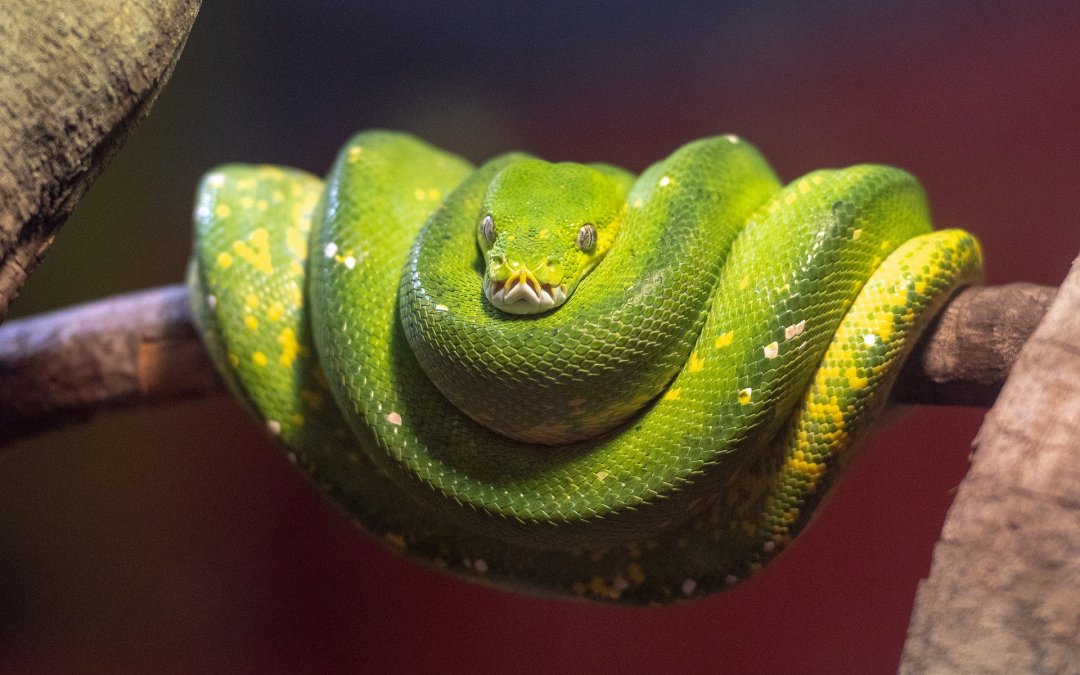
Recent Comments